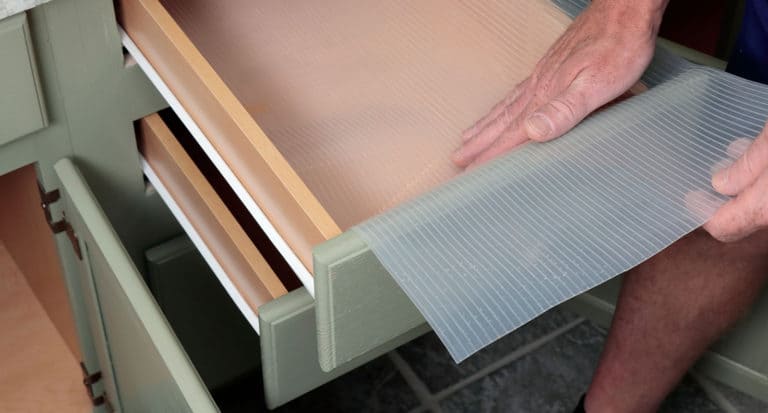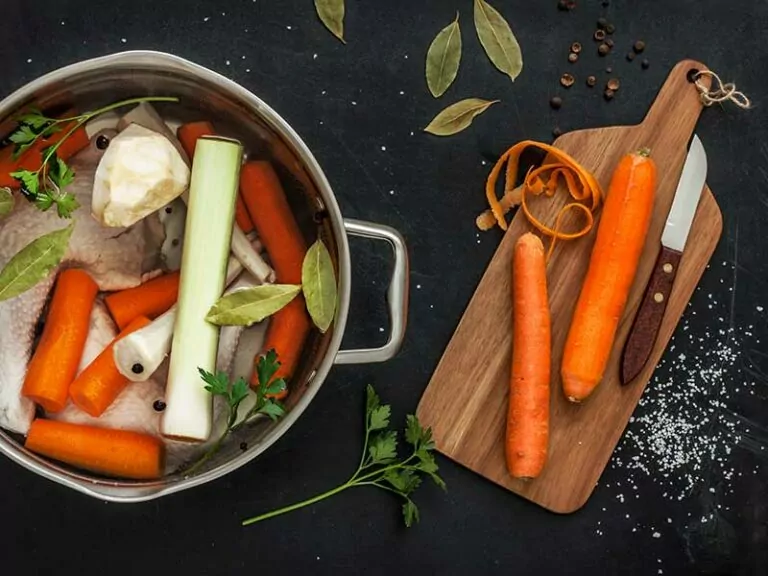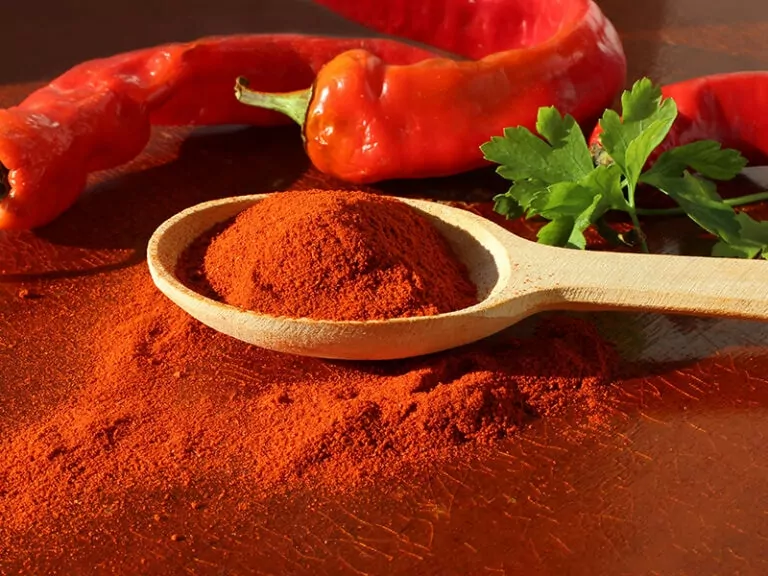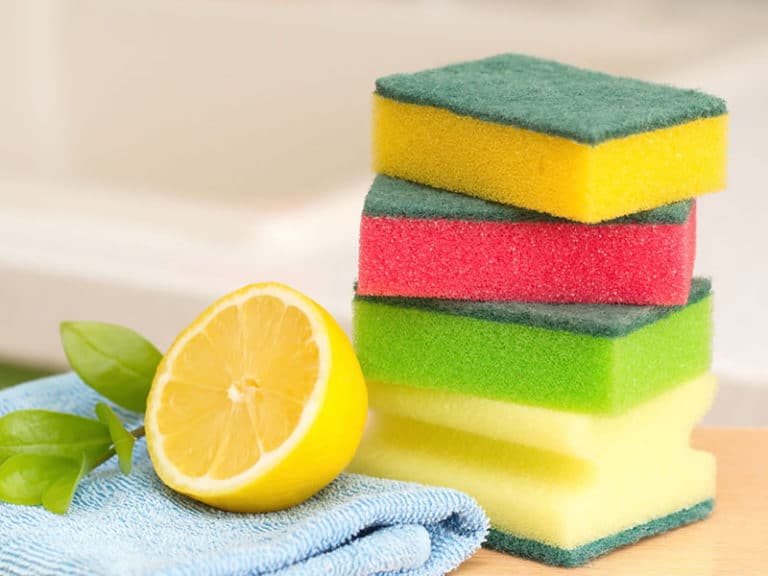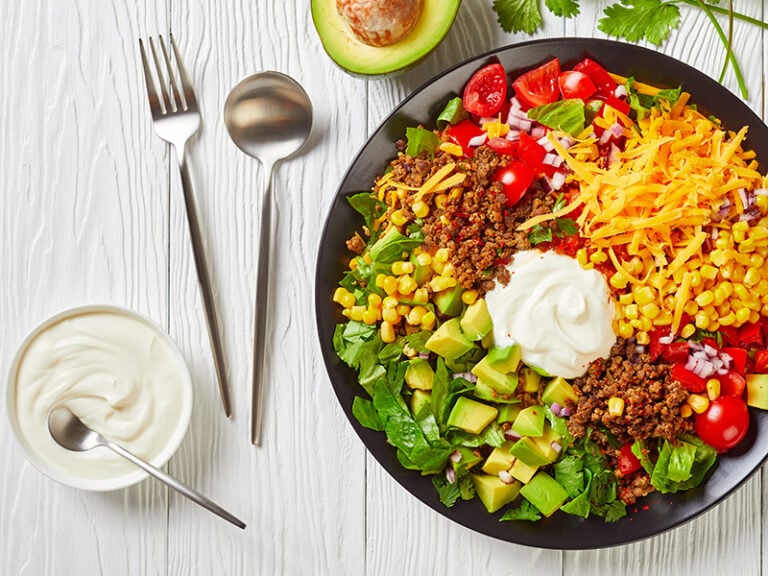“Cacao vs. cocoa” is always a topic that draws so much curiosity from the public. It’s easy to mistake one for the other since their ground forms are so alike. In addition, a large number of people use their names interchangeably.
However, that does not erase the differences between them. To get to the bottom of this, you need to look further into their making processes. And fortunately, I’m here to do that for you!
In this article, I’ll provide you with not only the information you need but also interesting recipes to try with them. What’s more, you can even try making homemade chocolate from scratch!
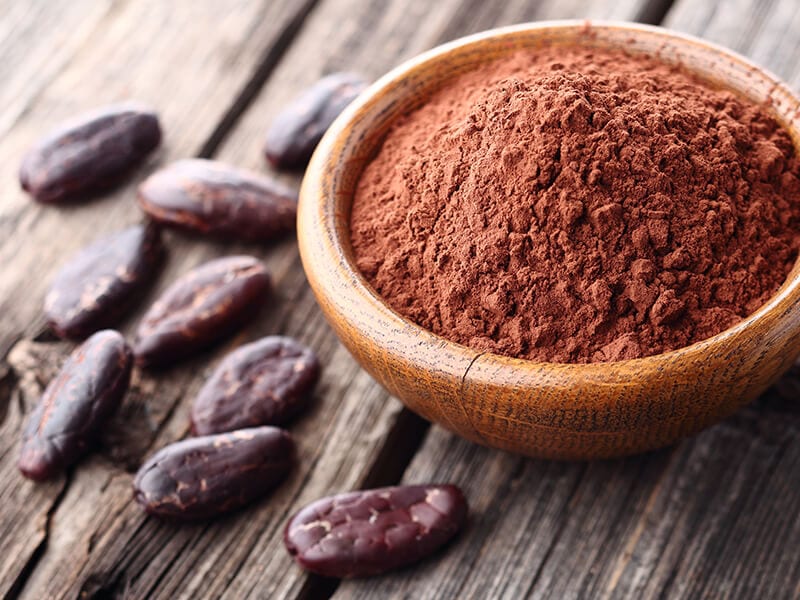
Things You Need To Know About Cacao
When mentioning cacao, you will likely think of a brown powder that you usually add to the baking flour. It’s fine! Not everyone is an expert in this field. But if you want to enhance your culinary knowledge, a small thing like this may matter.
Cacao Is Not Only A Powder
Cacao is the term that people often use to describe the Theobroma tree or the raw bean of this tree’s fruits. The exact time of cacao’s discovery is unclear, but its earliest archeological evidence is as far as 2000 years B.C.
These days, cacao trees are cultivated in tropical countries worldwide, such as Indonesia, Ecuador, Malaysia, Nigeria, and the Dominican Republic. Their fruits ( cacao pods) grow on the branches and trunks of the trees.
The interesting part is that the pods of the same tree don’t necessarily ripen at the same time. They also have different colors and shapes. To harvest the pods, farmers use a machete to cut them without damaging the flowers, allowing the trees to grow more pods.
The cacao plant has two edible components: the seed (bean) and the fruit. Each fruit comprises 20-60 beans covered in a sticky white pulp. Cacao beans are the main ingredient in making chocolate.
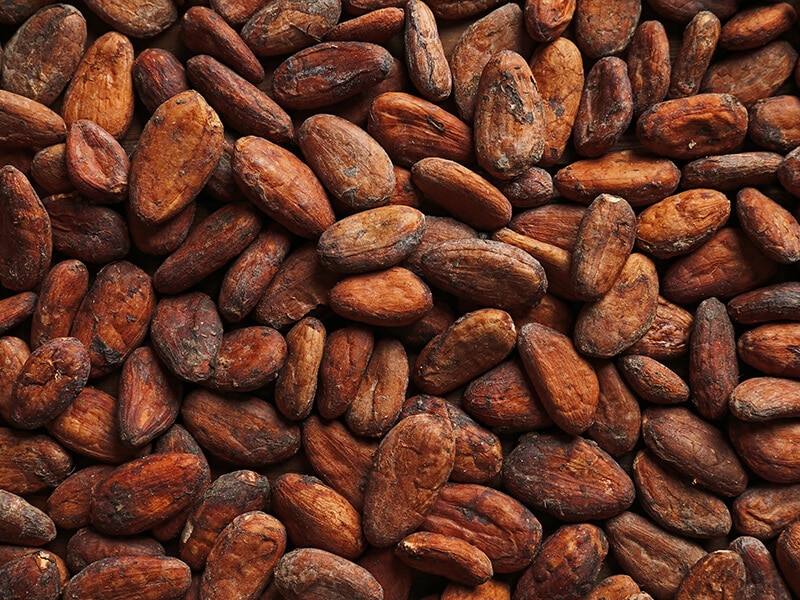
The Various Forms Of Cacao
After harvesting, producers process cacao beans into many forms to meet the needs of customers. Generally, there are 4 main types of cacao products: cacao nibs, paste, powder, and butter.
Cacao Nibs
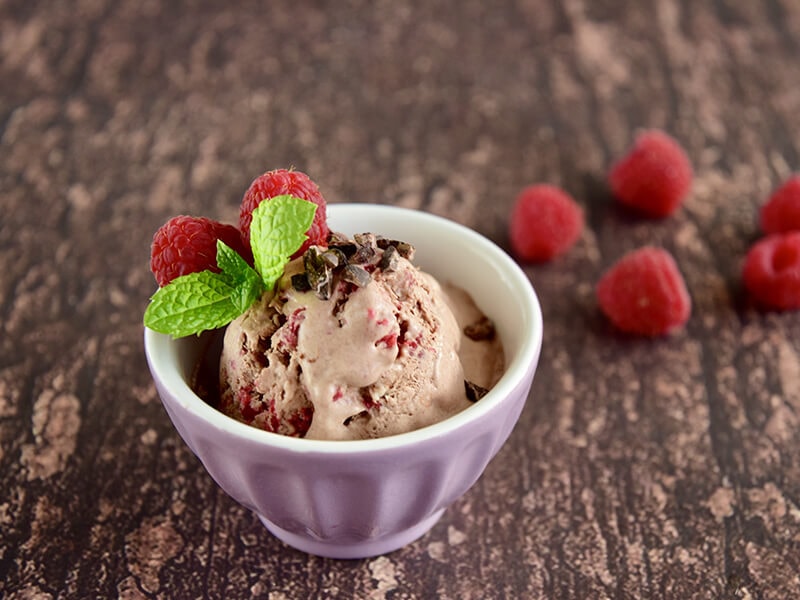
Cacao nibs are small pieces of dried and fermented cacao seeds (1). They have a richer, earthier, yet more bitter flavor than dark chocolate. In terms of texture, they are firm and crunchy, similar to roasted coffee beans.
They consist of half cacao solids (which are later processed to become cacao powder) and half cacao butter. You can find them in raw, roasted, or unroasted versions at many grocery stores.
Have you ever wondered about the production of cacao nibs? If yes, this interpretation is what you need.
Cacao Paste
Also known as cacao liquor, cacao paste is a natural product of cacao beans. When you crush raw cacao beans, they form a liquid that quickly solidifies at room temperature. The result you get is cacao paste.
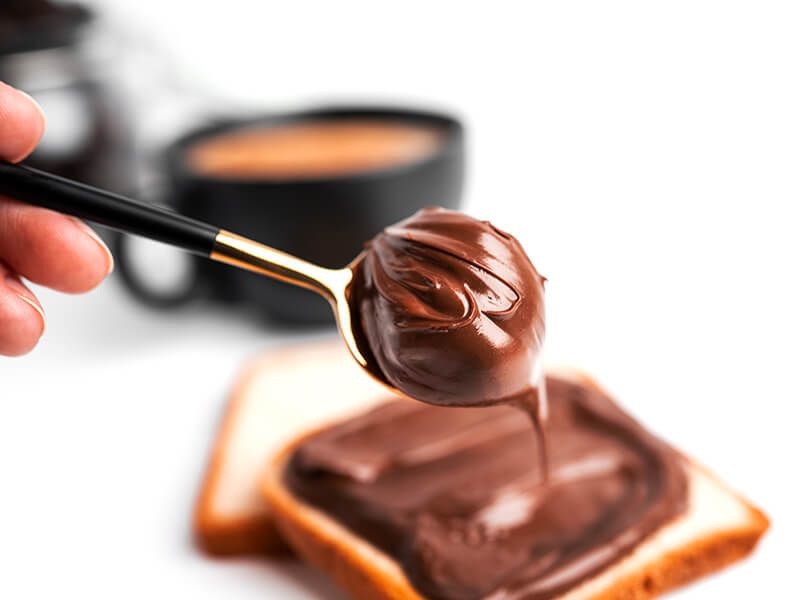
Cacao Powder
Raw cacao powder is the purest form of chocolate. To make it, people use the cold-pressing method on unroasted cacao beans. Since there is no heat involved, it can retain most of the natural substances.
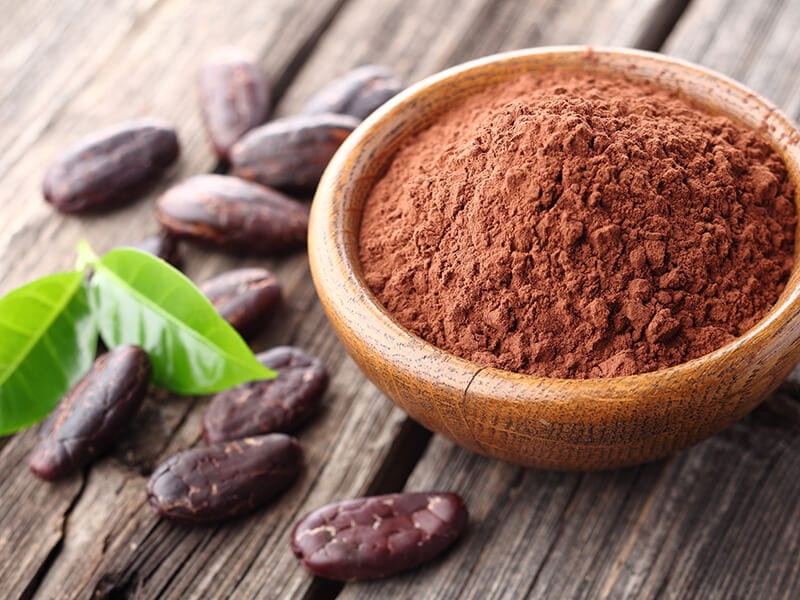
Cacao Butter
This product is an oil extracted from cacao beans after fermenting and roasting. It has a rich, creamy flavor and contains healthy fats like omega-3.
Cacao butter has a pale yellow hue with a strong chocolatey flavor and aroma. Though there is “butter” in the name, this product is vegan and plant-based.
The melting point of cacao butter is lower than the human body temperature, only about 93° F (34 °C) (2). For this reason, it can be solid at room temperature but melts perfectly in your mouth.
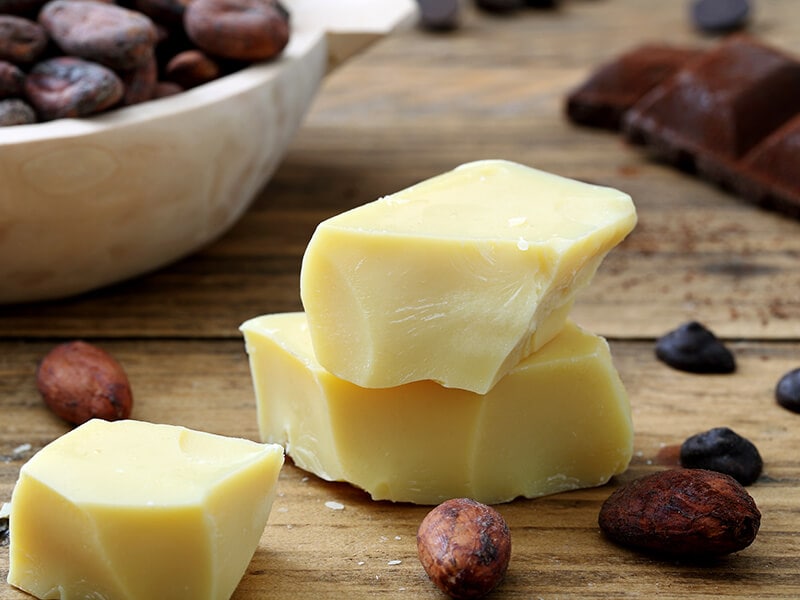
General Knowledge About Cocoa
If you are familiar with baking, then cocoa must be a usual ingredient in your pantries. But don’t you want to know about the origin of this powder? I’m sure you‘ll be intrigued!
Cocoa And The Relationship With Cacao
The word cocoa is actually the English translation of the word cacao in Spanish. No wonder they confuse so many people!
Technically, cocoa and cacao refer to the same plant and fruit (Theobroma cacao). But many people use cocoa to express the powder left after removing the fat from the ground beans. Meanwhile, cacao is mentioned to imply raw or less processed products of cacao beans.
Cocoa is the most concentrated version of chocolate. Its fat content is often between 10-24%. Most cocoa powder used for baking purposes is mostly unsweetened. But people also infuse it with honey, maple syrup, and white or brown sugar.
You can use cocoa powder in recipes like chocolate cake, brownies, biscuits, or as a chocolate flavoring for bread. Besides, adding this powder to your coffee is not a bad idea.
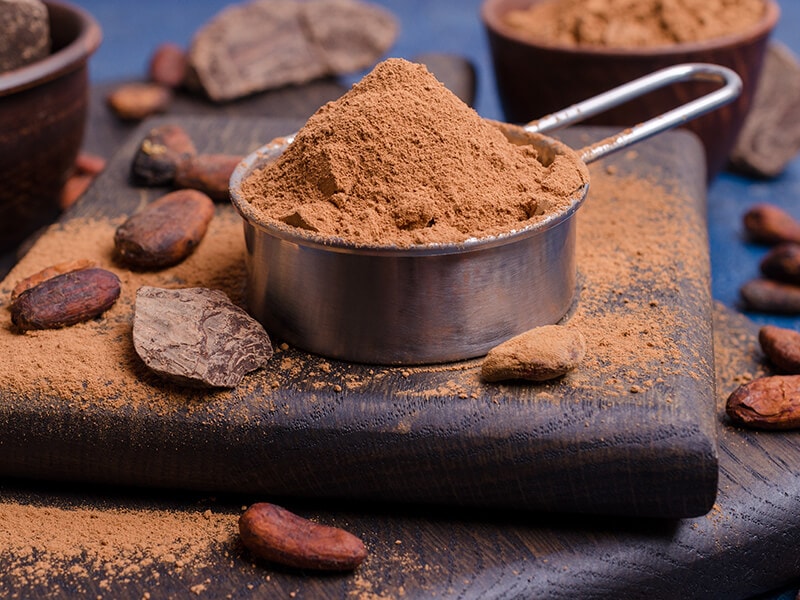
How Cocoa Powder Is Made
Once the harvesting of cacao beans is complete, they will undergo several processing steps to create cocoa powder. In short, the basic process includes 5 basic steps.
Harvesting
The harvesting of cacao beans spread over several months. After carefully removing them from the trees, the fruits are inspected to ensure compliance with regulatory requirements. Using a sharp knife, workers cut the fruits in half and remove the inside.
Fermentation
The whole beans (along with the sticky white flesh) are put into cans or baskets and covered for 2-9 days. This allows the bacteria on the pulp to ferment the beans and release a distinct flavor and aroma.
Microbes and yeast in the air create acetic acid and turn it into alcohol. The scent begins to smell like chocolate, and the bitterness decreases. At the end of the fermentation, the seed’s color becomes dark brown.
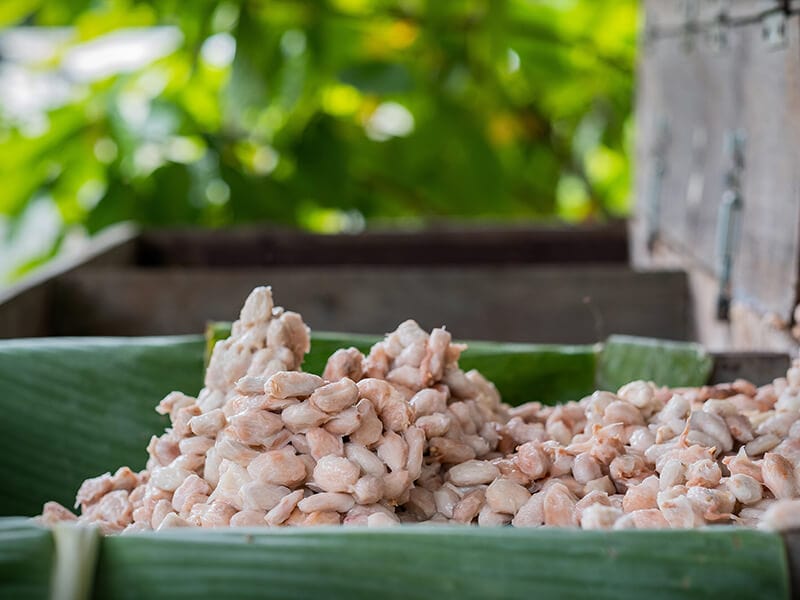
Drying
Drying helps reduce the moisture content of cacao beans and strengthen their flavor. Workers place them on trays or bamboo mats under the sun or in a closed room with hot air blowers for 10-20 days.
The seeds are classified into different categories according to size, then packed into bags and sold to chocolate factories.
Particle Roasting
This will take about half an hour to 2 hours. Roasting makes the seeds turn darker and enhances their taste and aroma. The temperature plays an important role in this step.
If it is too hot, the seeds will be overly bitter, while they may not release all their fragrance when there isn’t enough heat. Light and small cacao seeds require a lower temperature than large ones.
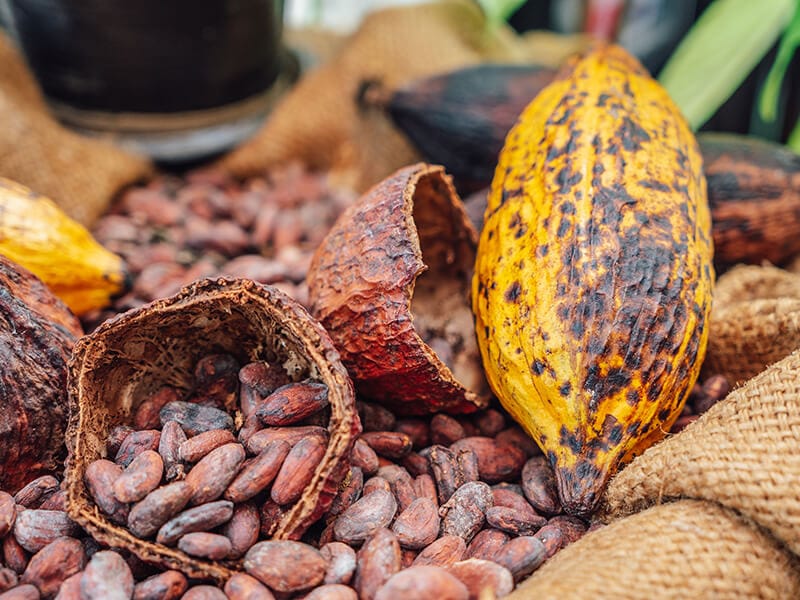
Grain Milling
Since the shells of the seed are much lighter than the grains, people can easily remove them through a sieving process. Then, the seeds are ground into flour.
During this stage, the fat inside the seeds melts, and the powder forms a dark brown mass, also called chocolate liquor. The liquor will undergo further processing while the rest is pulverized into unsweetened cocoa powder.
Differences Between Cacao Powder And Cocoa Powder – More Than Just A Name
Both cacao and cocoa powder come from the same plant. However, the finished products are remarkably different in terms of color, flavor, and nutritional value.
Pronunciation
First, you have to mention the difference in the pronunciation of cacao and cocoa. The right way to pronounce cacao is “ka-kao” or “cuh-cow”.
This word originates from the Olmec community – the first major civilization in Mexico. This is probably the closest pronunciation of the initial name of the plant.
In the meantime, the two syllables of cocoa are the same and should sound like “kow-kow”. Ironically, some people believe the word actually stemmed from a spelling mistake of “cacao”. But over time, it began to widely replace the correct form.
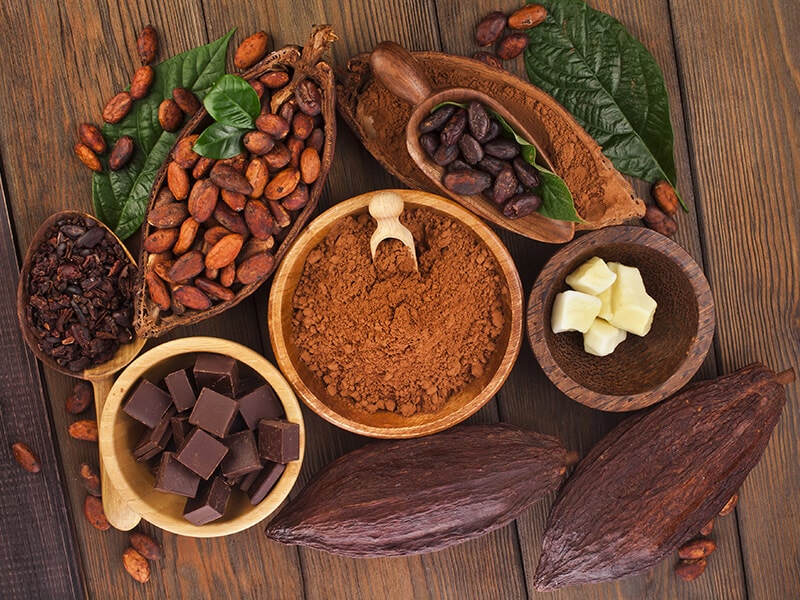
Processing Level: Colors And Flavors
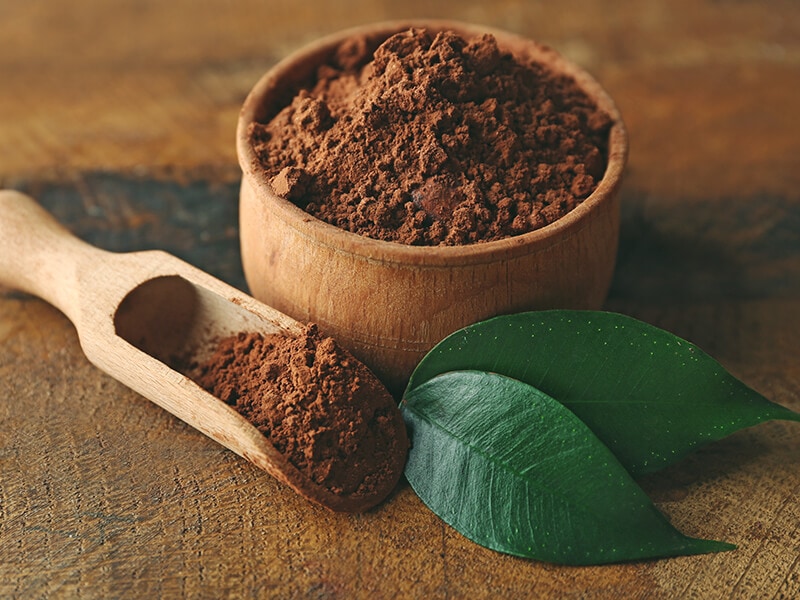
The differences between them mostly come down to the level of processing. Cacao powder is a product of fermenting and cold-pressing unroasted cacao beans.
Therefore, it can keep the natural light brown colors, whereas cocoa powder has a distinct reddish brown hue due to the roasting process.
The cocoa powder goes through an extraction stage to remove the fat, leaving cocoa solids behind. But the method does not eliminate all the fat content.
Typically, the cocoa powder comprises about 10-15% cocoa butter. Products with higher quality will retain a bit more cocoa butter.
Cacao powder can keep its original flavor, which is deeply chocolatey and intensely bitter. Cocoa powder, on the other hand, has a milder and less bitter taste. It has a sense of sweetness too.
Nutrition
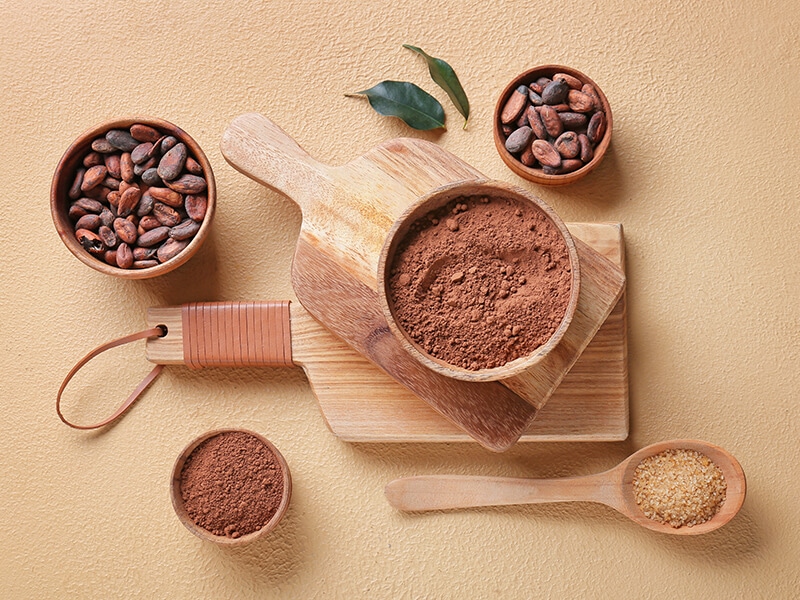
Cacao powder has more nutritional value than cocoa powder. When processed with heat, cocoa powder loses nutrients. This results in a lower content of calories, fiber, fat, and other substances. Here is what 2 tablespoons (28.3 grams) of cacao powder and cocoa powder contain:
Cacao contains trace minerals such as magnesium, potassium, and iron (3). It is also high in antioxidants. These compounds can decrease heart-related diseases and body inflammation.
Cocoa powder provides a relatively equal amount of carbohydrates and protein compared to cacao powder. Consuming cocoa powder can give you various health benefits, especially if it consists of at least 72% cocoa (4).
Cacao products boast flavonoids, substances that help reduce blood pressure and improve blood transportation to the brain and heart (5). In addition, it may increase insulin sensitivity, resulting in a lower risk of diabetes.
Do you feel like eating chocolate improves your mood? It’s because chocolate consists of tryptophan, an amino acid that creates serotonin to help you relax.
But keep in mind that cacao powder is remarkably higher in calories and fats compared to cocoa powder. So, even though it offers you some health benefits, you should use the powder in moderation.
The same goes for chocolate. A small tip for you is that you should choose dark chocolate and unsweetened products to avoid eating too much sugar.
Cocoa powder can bring you amazing health benefits that you may not know!
Substituting Cacao For Cocoa And Vice Versa: Is It Possible?
You can use cacao powder in baking in exchange for cocoa. Nonetheless, as I mentioned above, it is stronger in flavor, so you may want to use it in smaller amounts.
In addition, both cacao powder and unsweetened cocoa powder contain acidity. But some cocoa powder varieties are not acidic, such as the Dutch process (also known as Dutch cocoa or alkalized cocoa).
However, this variety cannot react with baking soda or create a leavening effect. Another thing you should consider is that cacao powder is starchier and more absorbent than cocoa powder, so you should use more liquid to prevent your baked goods from drying.
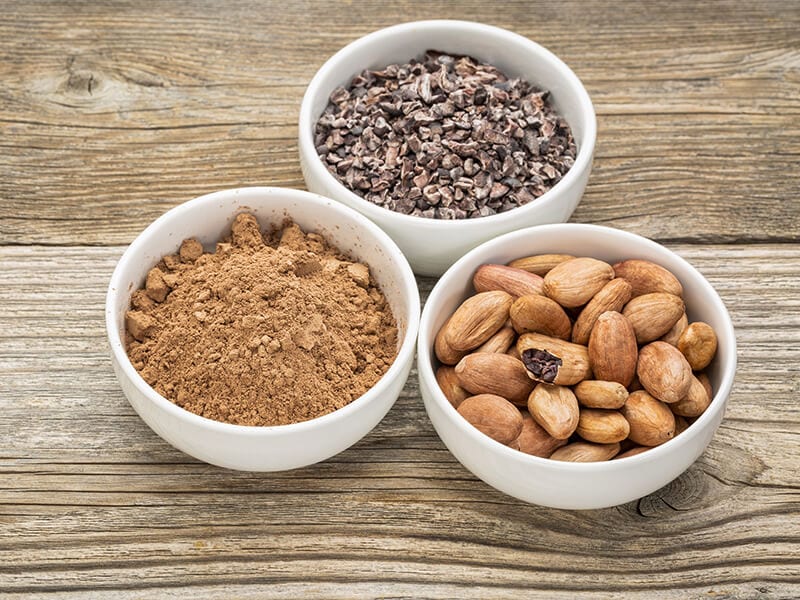
Homemade Chocolate From Cacao Pods
Store-bought chocolate tastes delicious, but it may have some additives that are not good for your health. Therefore, many people opt for making homemade chocolate to have ingredients under their control.
Follow these directions, and you can make delicious chocolate bars right at home. And the best thing is that it tastes just as good as the ones you buy from stores or even better!
Theoretically, before molding the chocolate, you need to temper the chocolate. This process includes slowly heating and cooling the chocolate to form a crystallized structure. When it’s done, the chocolate becomes shiny, snappable, and crunchy even at room temperature.
However, the tempering process requires advanced skills and a good thermometer. You can skip this step or do it after molding the chocolate. After all, soft chocolate is still a treat to die for.
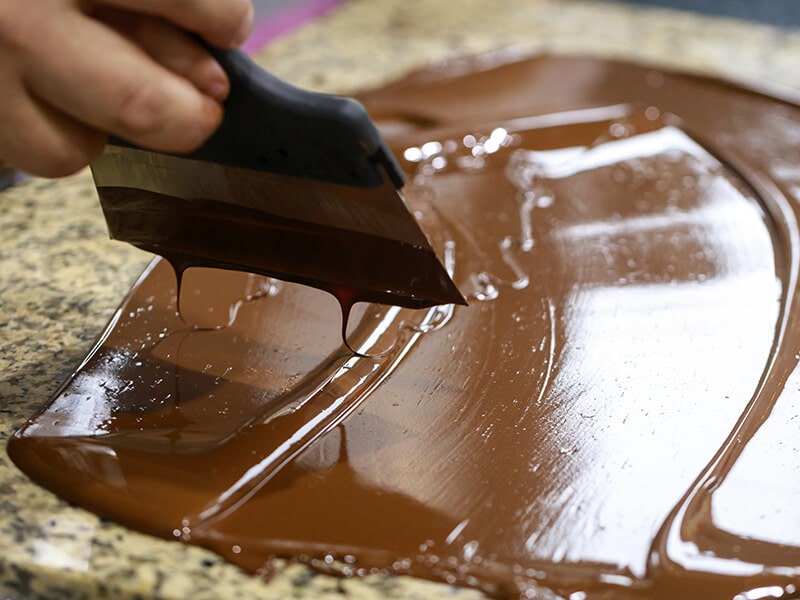
Step 1: Prepare The Pods
The first thing you need to do is cut the cacao pods open. The easiest way is to hit them with a hammer or wooden muddler. If you want to save the shell for later use, a hand saw would be helpful. Once the pods are open, you will see white jelly pulps.
Step 2: Fermenting
You can apply a traditional technique by using banana leaves or just go for a dehydrator.
Method 1
Line a large bowl with banana leaves and place the beans inside. Cover them with another layer of leaves. The optimal temperature is 40-50ºC. Drain the bowl once per day as it may produce some juice due to the heat. This process takes about 5 days.
Method 2
Spread the beans across the dehydrator tray. Remember to leave some space for airflow. Set the temperature at 104º F/40º C and run for 5 days.
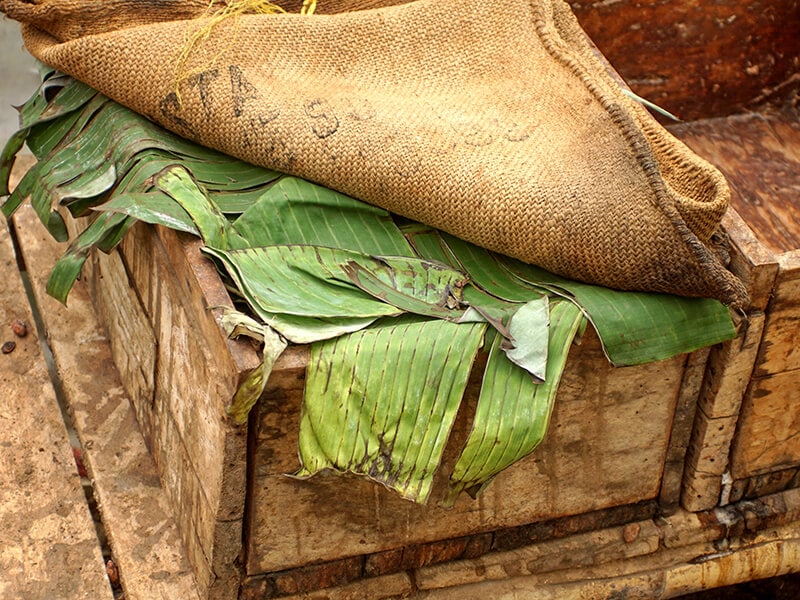
Step 3: Roasting
Examine the beans to eliminate the broken or smelly ones. Next, lay them on a baking sheet lined with parchment paper and roast them in the oven at 250º F/ 120º C for 15-20 minutes. You can peel the beans either before or after roasting.
Step 4: Removing The Cacao Nibs
Press the beans with your finger until they break, then transfer them to a bowl. You can also put them in a bag and roll a rolling pin over it. At this point, the cacao nibs can be eaten right away or further processed into chocolate.
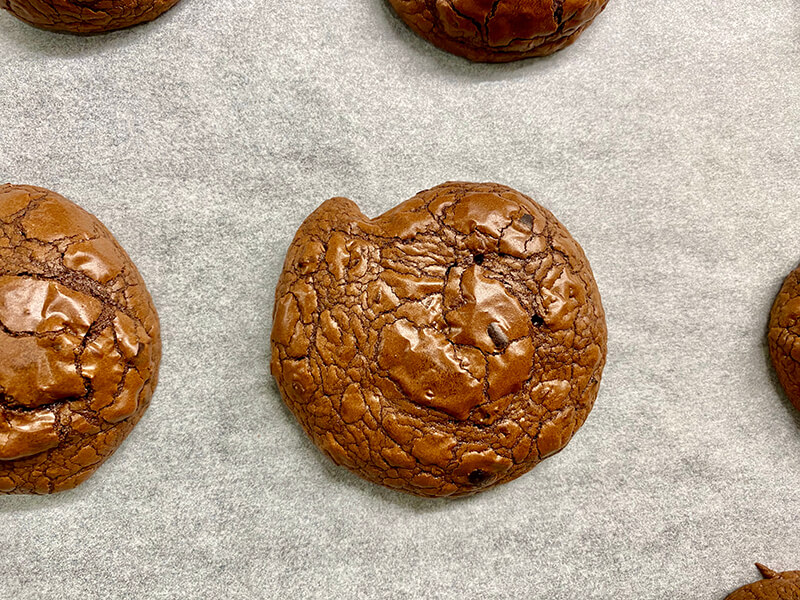
Step 5: Grinding
A high-speed blender or a grinder is the equipment that you’ll need. Feel free to add sugar anytime in this process. But make sure it’s powdered sugar so that it won’t change the consistency of your food.
High-speed blender: Blend the beans until they look slightly wet. Transfer them to a microwave-safe bowl and heat for 20-30 seconds. Then, put them back into the blender and continue blending.
Grinder: Divide the nibs into small portions and grind them into a paste. Grind them at one-minute intervals until smooth.
Step 6: Molding
Pour the chocolate into the mold. Remove excess air bubbles by tapping the mold against a counter. Let the chocolate settle at room temperature before demolding it.
Do you need a demonstration on how to make chocolate from cacao pods? I got your back!
Absolutely Delicious Recipes To Try With Cocoa Powder
Cocoa powder is a perfect ingredient for desserts. Its acidity and bitterness make it a great choice for non-sweet lovers. If you still don’t know what to do with your cocoa powder, consult these recipes now!
1. Italian Tiramisu
There is nothing better than a hot cup of coffee paired with tiramisu for dessert. This recipe features a creamy mascarpone filling and coffee-soaked ladyfingers. In addition, a dusting of Dutch cocoa powder will give your cake a less bitter taste and an intense dark color.
2. Moist Chocolate Cake
You’ll love this recipe since it is so easy to make, even without a need for a mixer. The result is extremely moist and soft. Cocoa powder is the star of this cake. It imparts a rich chocolate flavor that will linger in your mouth for a long time.
3. Cocoa Fudge Brownies
These brownies are crispy and crackly on top, but their exterior is soft and rich with loaded chocolate chips. What’s more, you only need a few basic ingredients like butter, sugar, eggs, oil, salt, and unsweetened cocoa powder.
This extremely easy recipe will give you the best cocoa fudge brownies you’ve ever tried.
4. Texas Sheet Cake
This buttery chocolate cake with cocoa frosting and pecans on top is too good to miss. Its name derives from the cookware you use to bake it – a sheet pan. Pure cocoa powder results in a rich and chocolatey flavor, which makes it perfect for sweet tooth people.
5. Chocoflan
It is a combination of dense, rich chocolate cake and creamy vanilla flan. Although flan usually goes with caramel, this recipe features another topping – dulce de leche. The magic of this cake is that it can switch the layers during baking, which means it will be served with the batter underneath the flan.
FAQs
Do you have some queries about cacao and cocoa but don’t know where to find the answer? Rest assured that this section will solve whatever problem is in your mind right now!
Now You Can Draw A Distinction Between Cacao And Cocoa
The confusion between cacao and cocoa comes from the way people in different countries call them. Technically, they both refer to a type of tree. Despite that, there are some subtle differences between them.
When someone mentions cacao without any suffix, they are likely to describe a plant or a fruit of Theobroma cacao – a tropical evergreen tree. Meanwhile, cocoa refers to a processed ground form of cacao beans.
Due to the making process, cocoa powder is less bitter than cacao powder. Consuming cacao products can bring you some health benefits, but excessive usage might turn them into harmful substances.
So, cacao and cocoa powder, which type is your favorite? Comment below to find other like-minded readers! And last but not least, share this post with your relatives to help them enhance their culinary knowledge!
References
- Healthline.com (2019), What Are Cacao Nibs? Nutrition, Benefits, and Culinary Uses
- Ioc.gov (2020), Why does chocolate melt in your hand?
- Webmd.com (2022), Health Benefits of Cacao Powder
- Webmd.com (2022), Health Benefits of Cocoa Powder
- Webmd.com (2022), Cacao Powder: Health Benefits, Nutrients, and More

